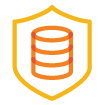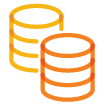Welcome to TigerGraph® DB
The TigerGraph® self-managed database runs on standard Linux servers, with everything built-in. To view the documentation of a particular TigerGraph version, please see please see the Version Directory.
Get to Know Your TigerGraph DB
Step-by-step guides to get you up and running. |
Learn to use TigerGraph’s role-based access control (RBAC) and other security features. |
Learn how to design a database, create loading jobs and write queries. |
Learn how to load data into and export data from TigerGraph. |
Advanced Topics
Define and manage clusters for scaling and high availablity. Cluster overview | High Avalability | Cross-Region Replication |
Learn to manage TigerGraph servers and how to set up system backups. System Management | Backup and Restore | Workload Management |
Observe system metrics and behavior. |
Go deeper and learn what’s behind the platform. Internal Architecture | Transaction and ACID | Continuous Availability Overview |
Automate the deployment and managing of TigerGraph clusters using Kubernetes. |
Explore API directories, troubleshooting guides, and more. Best Practices | Troubleshooting Guide | Glossary | List of Ports |








